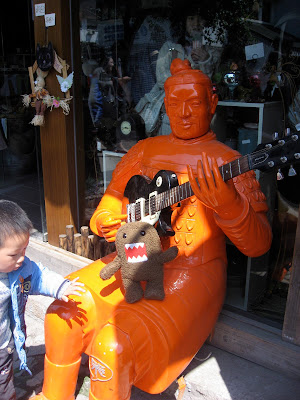When I first encountered "street pajamas" in Shanghai, I assumed they were a stubborn holdover from the dreary Mao-era uniforms that unseated fashion here for 30 years. But a little research indicates otherwise.
Seems this peculiar practice of stepping out in sleepwear started after the "opening up" around 1980, when Western style pjs began to be sold in China without proper instructions for use. To the isolated Chinese eye, these novel suits of silk and flannel seemed far too fine to be relegated to one's bedroom. PJs were misinterpreted as a symbol of wealth and sophistication, something to be shown off with a whiff of flair.
At the same time, most of China's urban dwellers lived crammed into tiny communal style houses with public bathrooms and kitchens. It didn't make sense to change out of one's perfectly nice pajamas to walk to the toilet or across the road to the fruit market. Eventually, people began to venture further afield in their sleepwear: to the shopping mall or subway. Accessories like high heels and man bags were added. Voila! The Pajama Nation.
Before the 2010 World Expo, Shanghai officials got squeamish about what effect pajama people might have on their city's burgeoning cosmopolitan image. A campaign was launched to snuff out what they now regarded as the fashion faux pas. Signs were posted stating, "Pajamas Don't Go Out the Door!" And volunteer Pajama police patrolled neighborhoods telling offenders to go home and change.
Fortunately, some residents cling defiantly to their loungewear rights, like this darling couple in front of the Coffee Bean and Tea Leaf on a Sunday stroll wearing matching his and her outfits.
Lo and behold, whimsically minded Western fashion designers are taking notice. In London, Rachel Roy hit the red carpet in a pair of pajamas she bought in the Hamptons - channeling the Celine 2012 Resort collection (left).
And Sofia Coppola just wore these Louis Vuitton stunners in Vogue!
How clever! And comfy too!

















































